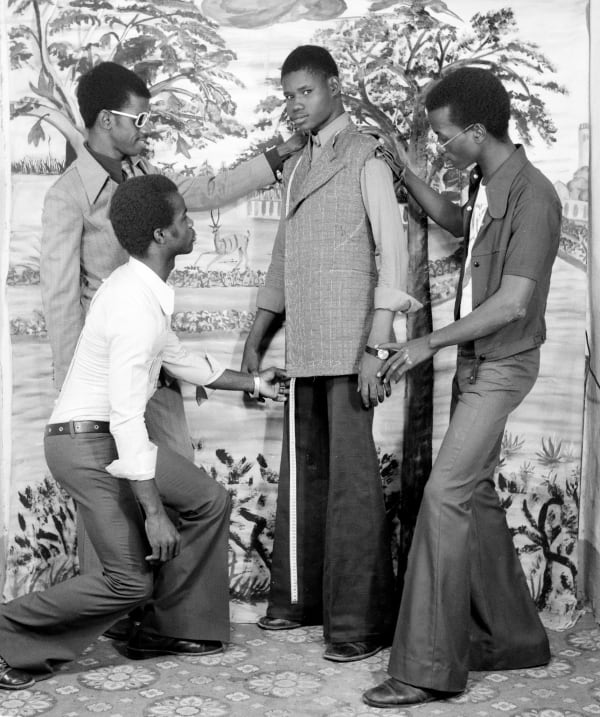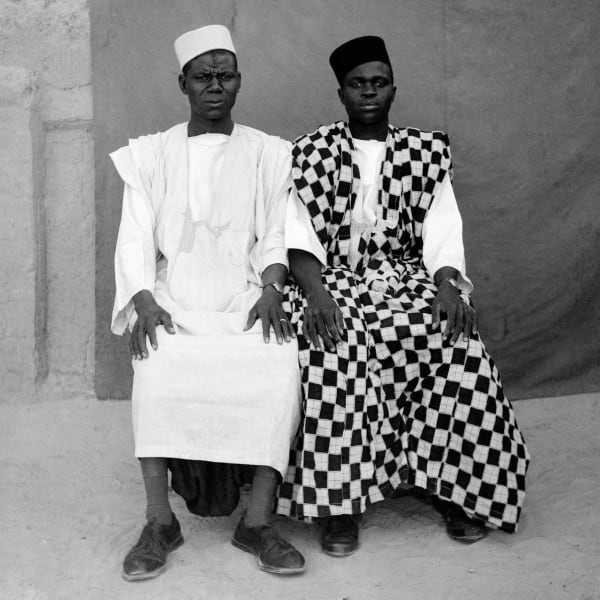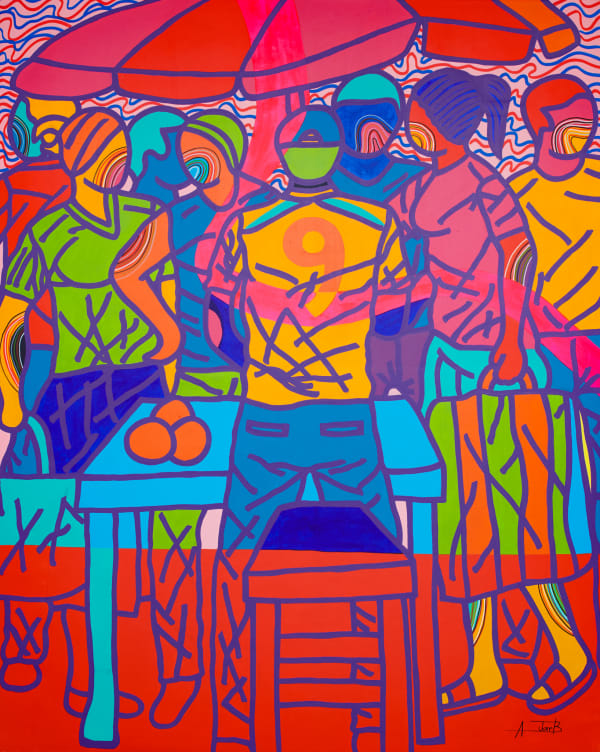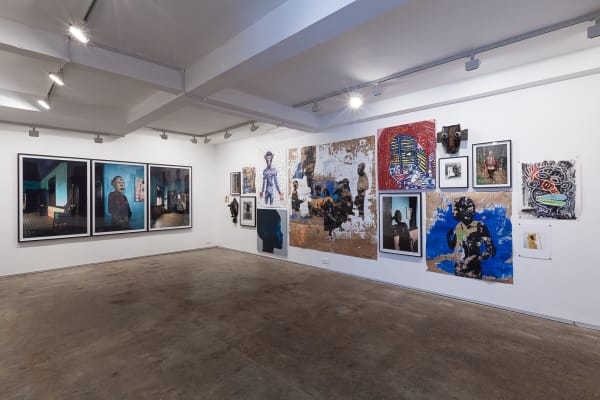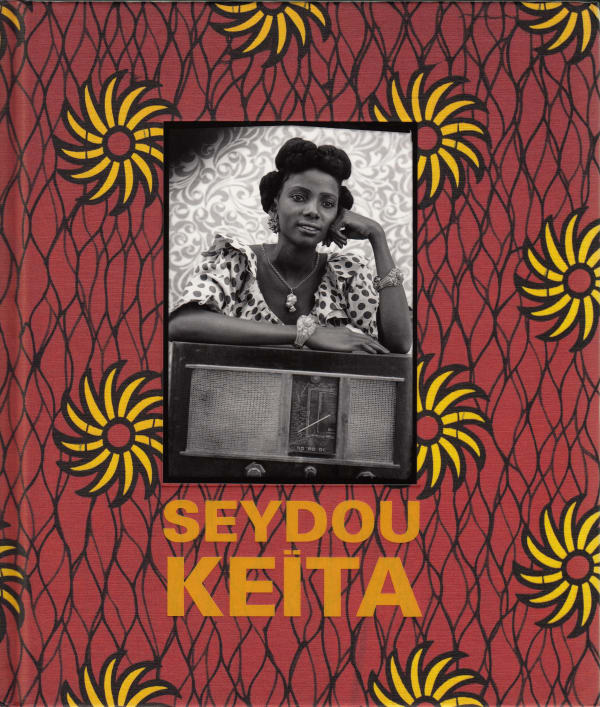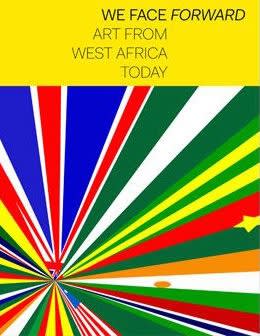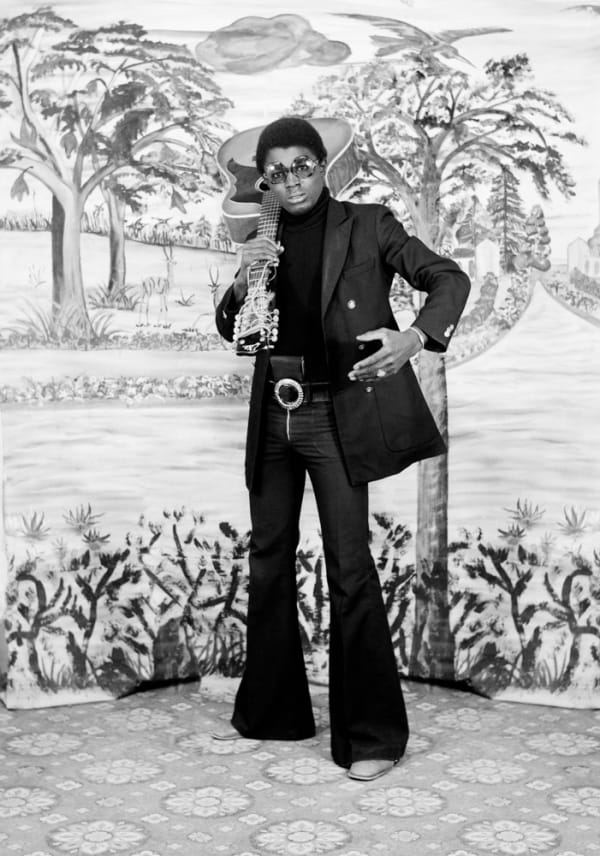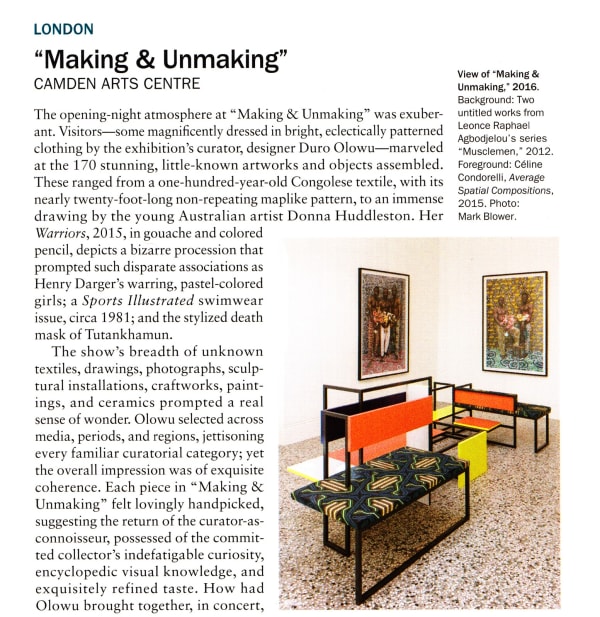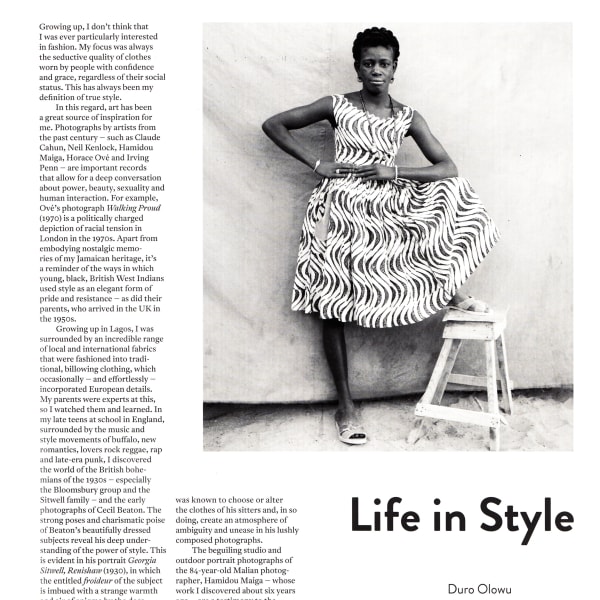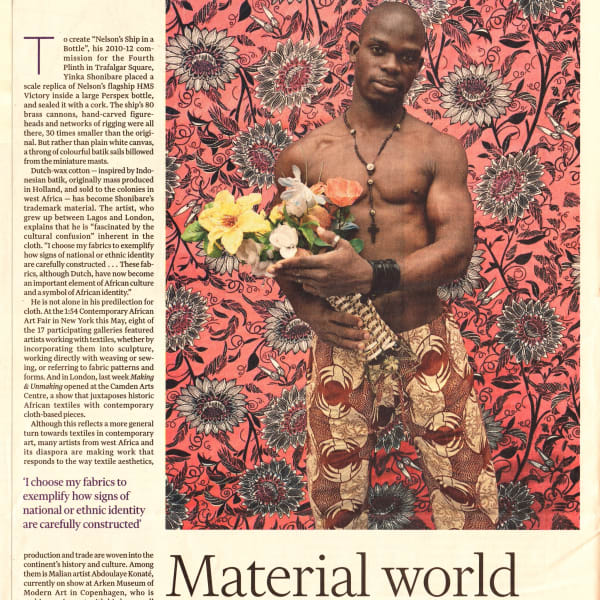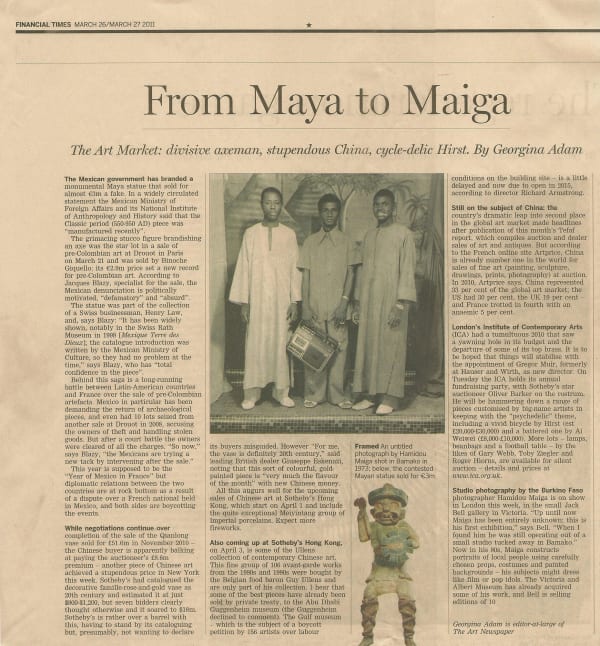Hamidou Maiga Bobodioulasso, Burkina Faso, b. 1932
Initially trained in Timbuktu as a mason, Maiga's career as a photographer was launched in the early 1950s when he purchased his first camera, a medium format Souflex. At the age of twenty he learnt the rudiments of photography and printing through photojournalism, and in 1958 Maiga opened his first studio in N'Gouma. For two years he traced the route of the River Niger developing a clientele for his distinctive outdoor studio portraits. In 1960 he returned to Timbuktu with a successful business.
As well as villagers in their finery, a swathe of dignitaries, accomplished artists, musicians, sportsmen and religious authorities frequented Maiga's studio. During these early years, his photographs eloquently portray Malian society in its era of transition from a cosmopolitan French colony to an independent African nation. Balancing a strict sense of formality with a remarkable level of intimacy with his subjects, Maiga evokes stylistic traits simultaneously mastered by Irving Penn in the seminal Worlds in a Small Room.
In 1973 Maiga opened his first studio in Bamako. The period following independence from France experienced a great sense of freedom and confidence combined with economic expansion. European and American fashions became readily available to a Malian audience and energised local culture. Maiga constructed each image using a mixture of carefully chosen props, costume and painted backgrounds, giving them a new graphic intensity with black and white film. His subjects would dress like their idols and a specific film or look would dictate the way they wore their jackets or held their cigarettes. These unique images reflect both his client's social identity within the community and their enthusiastic embrace of modernity.
As well as forming an outstanding record of Malian society, Maiga engages his subjects in a style recalled by contemporary artists such as Rineke Djikstra. While his precursor Seydou Keita and contemporary Malick Sidibe have achieved international recognition by museums, collectors and publishers worldwide, Maiga's archive of negatives has only recently come to light. His work has been exhibited at the Camden Arts Centre, London, and the Mate - Museo Mario Testino, Peru. Aqcuisitions have been made by the Victoria & Albert Museum, UK, Carnegie Museum of Art, USA and the Smith College Museum of Art, USA.
-

Rassemblement
Group exhibition 20 Jul - 3 Aug 2018Private view: Thursday 19 July, 6 - 8 pm Aboudia Leonce Raphael Agbodjelou Ajarb Bernard Ategwa Armand Boua Goncalo Mabunda Hamidou Maiga Boris Nzebo Bambo SibiyaRead more -

Le Penseur
Group exhibition 5 - 13 Aug 2016Aboudia Leonce Raphael Agbodjelou Armand Boua Karen Hampton Goncalo Mabunda Hamidou Maiga Gastineau Massamba Boris Nzebo Private view: Thursday 4 August 2016, 6 - 8 pmRead more -

From Dahomey to Timbuktu
Studio Photography in West Africa, 1960 to Present 13 - 21 Nov 2015Jack Bell Gallery is pleased to present a group exhibition of portraiture by six West African photographers. The show focuses on the regions of Mali and Republic of Benin and...Read more -

Studio Lumiere
10 Contemporary Artists Living & Working in Africa 19 - 28 Aug 2015Jack Bell Gallery is pleased to present a group show of work by 10 contemporary artists living and working in Africa. Spanning Abidjan to Timbuktu and Douala to Kinshasa, 'Studio...Read more
-

Les Fantomes
Aboudia | Afedzi Hughes | Leonce Raphael Agbodjelou | Bandoma | Paa Joe | Hamidou Maiga 22 Sep - 29 Oct 2011Leonce Raphael Agbodjelou shoots traditional vodou rituals, rites, ceremonies, and festivals local to Benin, West Africa. His vibrant daylight images present masquerade as a complex, mysterious and profound tradition in...Read more -

Hamidou Maiga
Talking Timbuktu 23 Mar - 30 Apr 2011Jack Bell Gallery is pleased announce a solo selling exhibition of studio photography by Hamidou Maiga. Initially trained in Timbuktu as a mason, Maiga's career as a photographer was launched...Read more
-
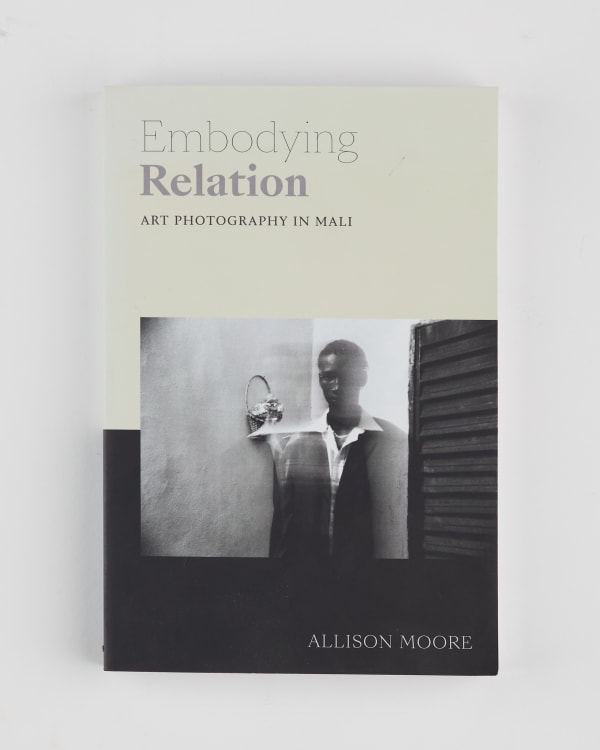
Embodying Relation: Art Photography in Mali
Duke University Press 2020 Read more -
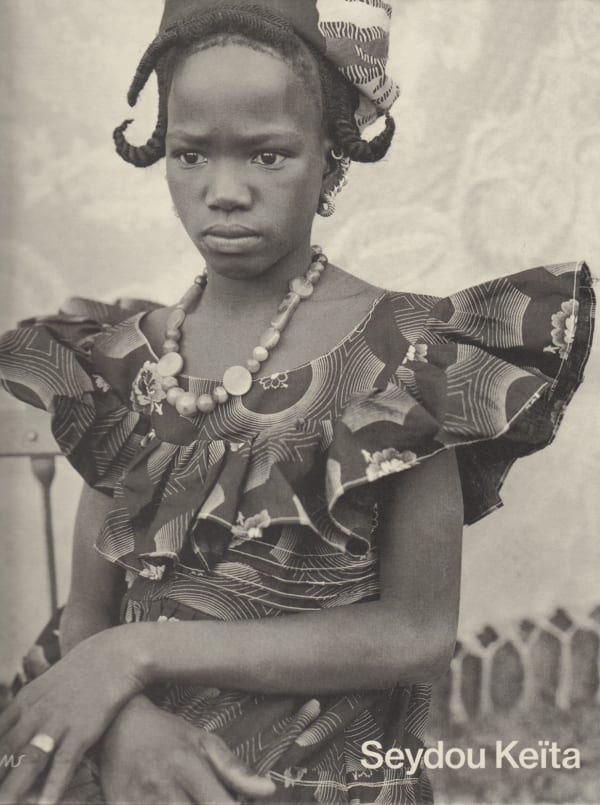
Seydou Keita
Instituto Moreira Salles, Brazil 2018 Read more -

Hamidou Maiga, 'La ruta del Niger: de Mopti a Tomboctu'
MATE: Museo Mario Testino, Lima, Peru 2016 Read more -

Making & Unmaking, curated by Duro Olowu
Camden Arts Centre, London 2016 Read more
-

Brooklyn Museum, New York
Featuring Hamidou Maiga, running till 22 October 2023 June 21, 2023'Africa Fashion', a group exhibtion including work by Hamidou Maiga moves to the next stop on its global tour at the Brooklyn Museum in new...Read more -

V&A, London
'Africa Fashion' featuring Hamidou Maiga, 2 July 2022 to 16 April 2023 April 22, 2022Africa Fashion , a new group exhibition at the Victoria and Albert Museum, London includes work by Hamidou Maiga. Africa Fashion will explore global impact...Read more -

Museum of Fine Arts, Houston
'Through an African Lens: Sub-Saharan Photography from the Museum’s Collection', 27 February - 8 November 2020. Includes works by Leonce Raphael Agbodjelou & Hamidou Maiga. February 27, 2020Dynamic images from the MFAH photography collection take you to sub-Saharan Africa. Travel from Benin to Zimbabwe and beyond with artists who are linked by...Read more -

The Royal Pavilion and Museums, Brighton & Hove
New aqcuisition of works by Hamidou Maiga. September 8, 2017Read more
-

Artforum
'Making & Unmaking' at the Camden Arts Centre, Gilda Williams, 1 October 2016 October 1, 2016Read more -

Frieze
'Life in Style', Duro Olowu, 1 September 2016 September 1, 2016Read more -

Artsy
'Mario Testino Spotlights the Overlooked West African Photographer Hamidou Maiga', Charlotte Jansen, 30 June 2016 June 30, 2016Read more -

Financial Times
'Material World', Lily le Brun, 25 June 2016 June 25, 2016Read more
-

Vogue
'Mind's Eye', Duro Olowu, 27 April 2016 April 27, 2016Read more -

Camden Arts Centre, UK
Group exhibition entitled 'Making & Unmaking', curated by Duro Olowu, 19 June - 18 September 2016. Including work by Jack Bell Gallery artists Hamidou Maiga and Leonce Raphael Agbodjelou, alongside Glenn Ligon and Lynette Yiadom-Boakye among others. April 26, 2016Duro Olowu Making & Unmaking Camden Arts Centre Hamidou Maiga Leonce Raphael AgbodjelouRead more -

MATE - Museo Mario Testino, Peru
Solo exhibition of work by Hamidou Maiga, 6 July - 23 October 2016. Maestros de la Fotografía is an exhibition series showcasing historical, modern and contemporary photography from cultures around the world. April 25, 2016MATE presents the third edition of Maestros de la Fotografía ; this exhibition series shows the work of established photographers from around the world. Maestros...Read more -

Smith College Museum of Art, USA
New aquisition of work by Hamidou Maiga. February 8, 2016 Read more
-

Indiana University Art Museum, USA
Group exhibition entitled 'Photographing the Social Body: Malian Portraiture from the Studio to the Street', including work by Hamidou Maiga, Autumn 2013. December 3, 2012Read more -

Manchester Art Gallery, UK
New acquisition of work by Hamidou Maiga. June 1, 2012Read more -

Manchester Art Gallery, UK
Group exhibition entitled 'We Face Forward: Art fom West Africa Today', including work by Hamidou Maiga, 1 June - 16 September 2012. June 1, 2012Read more -

Perlman Teaching Museum, Carleton College, USA
Group exhibition entitled 'Photographing the Social Body: Malian Portraiture from the Studio to the Street', including work by Hamidou Maiga. Show runs 30 March - 3 June 2011. March 30, 2012Read more
-

The New York Times
'Duro Olowu, Material: Salon 94, New York', Roberta Smith, 2 March 2012 March 2, 2012Read more -

Salon 94, New York, USA
'Material', a group show curated by Duro Olowu, including work by Hamidou Maiga. Show runs March 1 - March 31 2012. March 1, 2012Read more -

The New York Times
'The Moment: Exuberance', Nancy Macdonell, 5 February 2012 February 5, 2012Read more -

Perlman Teaching Museum, Carleton College, USA
New acquisition of work by Hamidou Maiga. January 10, 2012Read more

